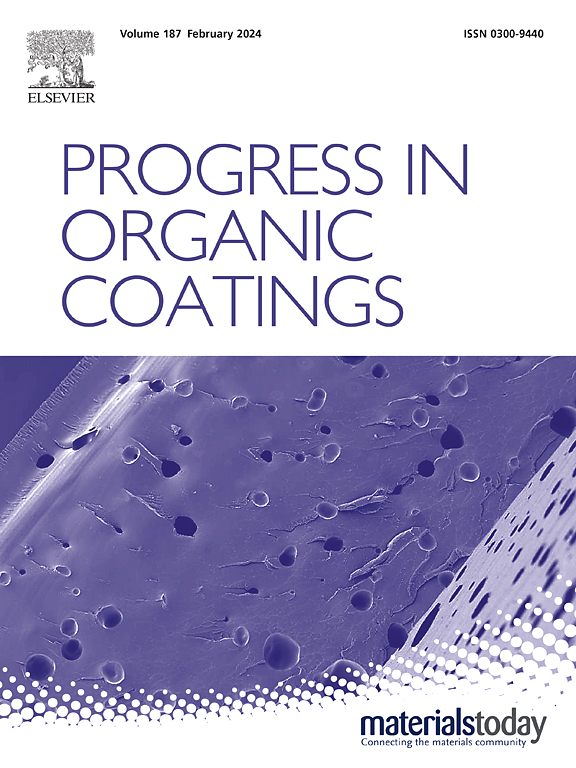Corrosion protection of mild steel by protonated and sodiated nafion in epoxy coatings
IF 6.5
2区 材料科学
Q1 CHEMISTRY, APPLIED
引用次数: 0
Abstract
We explored the anti-corrosion performance of epoxy coatings with Nafion in protonated form (HNE) and sodiated form (NaNE) and compared their characteristics with epoxy-only coating. The successful conversion of the H-Nafion to Na-Nafion was observed by fourier transform infrared (FTIR) spectroscopy, where the shift at the peak 1060 cm−1 and disappearance of the peak at 969 cm−1 were observed after the sodiating process. Mild steel substrates were coated with HNE and NaNE by spray gun and were immersed in 3.5 wt% NaCl solution for 2, 15, and 20 days. X-ray diffraction spectroscopy showed corrosion products due to uniform corrosion were observed in one of the HNE samples, but not in any of the NaNE samples. However, the lack of corrosion products arising from chloride attacks on the HNE and NaNE samples indicated their ability to repel chloride ions. The electrochemical impedance spectroscopy analyses showed that the NaNE and HNE samples with 2 wt% of Na-Nafion and H-Nafion, respectively, produced the highest coating protection efficiency of 99.9 %. Finally, we proposed a mechanism for the corrosion protection of the HNE and NaNE coatings against uniform corrosion and chloride ion penetration.
环氧涂层中质子化和固化离子对低碳钢的防腐作用
研究了质子化态(HNE)和碱化态(NaNE)含Nafion环氧涂料的防腐性能,并与纯环氧涂料进行了对比。通过傅里叶变换红外光谱(FTIR)观察到H-Nafion向Na-Nafion的成功转化,在1060 cm−1峰处观察到峰位移,在969 cm−1峰处观察到峰消失。用喷枪在低碳钢基体上涂上HNE和NaNE,并在3.5 wt% NaCl溶液中浸泡2、15和20天。x射线衍射光谱分析表明,在HNE样品中观察到均匀腐蚀的腐蚀产物,而在name样品中没有观察到腐蚀产物。然而,HNE和name样品缺乏氯离子攻击引起的腐蚀产物,表明它们具有排斥氯离子的能力。电化学阻抗谱分析表明,Na-Nafion和H-Nafion含量分别为2 wt%和2 wt%的nae和HNE样品的涂层保护效率最高,为99.9%。最后,我们提出了HNE和name涂层抗均匀腐蚀和氯离子渗透的腐蚀保护机制。
本文章由计算机程序翻译,如有差异,请以英文原文为准。
求助全文
约1分钟内获得全文
求助全文
来源期刊

Progress in Organic Coatings
工程技术-材料科学:膜
CiteScore
11.40
自引率
15.20%
发文量
577
审稿时长
48 days
期刊介绍:
The aim of this international journal is to analyse and publicise the progress and current state of knowledge in the field of organic coatings and related materials. The Editors and the Editorial Board members will solicit both review and research papers from academic and industrial scientists who are actively engaged in research and development or, in the case of review papers, have extensive experience in the subject to be reviewed. Unsolicited manuscripts will be accepted if they meet the journal''s requirements. The journal publishes papers dealing with such subjects as:
• Chemical, physical and technological properties of organic coatings and related materials
• Problems and methods of preparation, manufacture and application of these materials
• Performance, testing and analysis.
 求助内容:
求助内容: 应助结果提醒方式:
应助结果提醒方式:


